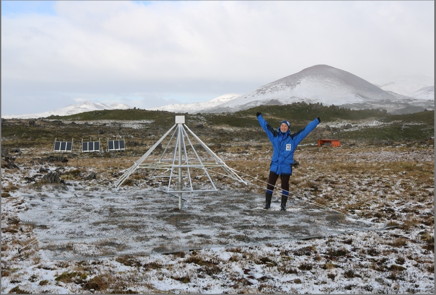Illuminating the Dark Universe with Radio Observations

Speaker(s): Cynthia Chiang
Redshifted 21-cm emission from neutral hydrogen is a powerful tool for observational cosmology research. Measurements across a wide range of radio frequencies allow us to access redshifts that encompass a vast comoving volume, spanning both cosmic dawn and the formation of large-scale structure. I will describe the HIRAX, PRIZM, and ALBATROS experiments, which aim to shed new light on the universe’s evolution via redshifted 21-cm measurements. HIRAX is an experiment that will measure baryon acoustic oscillations (BAOs) through 21-cm intensity mapping over a frequency range of 400-800 MHz. By using the characteristic 150-Mpc BAO scale as a “ruler,” HIRAX will chart the expansion history of the universe during the period when dark energy began to dominate. The HIRAX radio telescope array will be sited in South Africa and will ultimately comprise 1024 dishes, each six meters in diameter. An eight-element HIRAX prototype is currently in operation, and construction of the first 256 elements will begin soon. PRIZM is an experiment that is designed to study cosmic dawn by observing globally averaged 21-cm emission in a frequency range of 50–150 MHz. The instrument consists of two modified four-square antennas and a dual-polarization spectrometer back end. PRIZM deployed in April 2017 to Marion Island, an exceptionally isolated and radio-quiet loca tion in the sub-Antarctic, and the science observations are ongoing. ALBATROS is a new companion experiment to PRIZM that aims to image the radio sky at tens of MHz. The instrument will consist of autonomous low-frequency antenna stations that observe independently but can be interferometrically combined offline. I will discuss the design, project status, and science prospects for HIRAX, PRIZM, and ALBATROS.